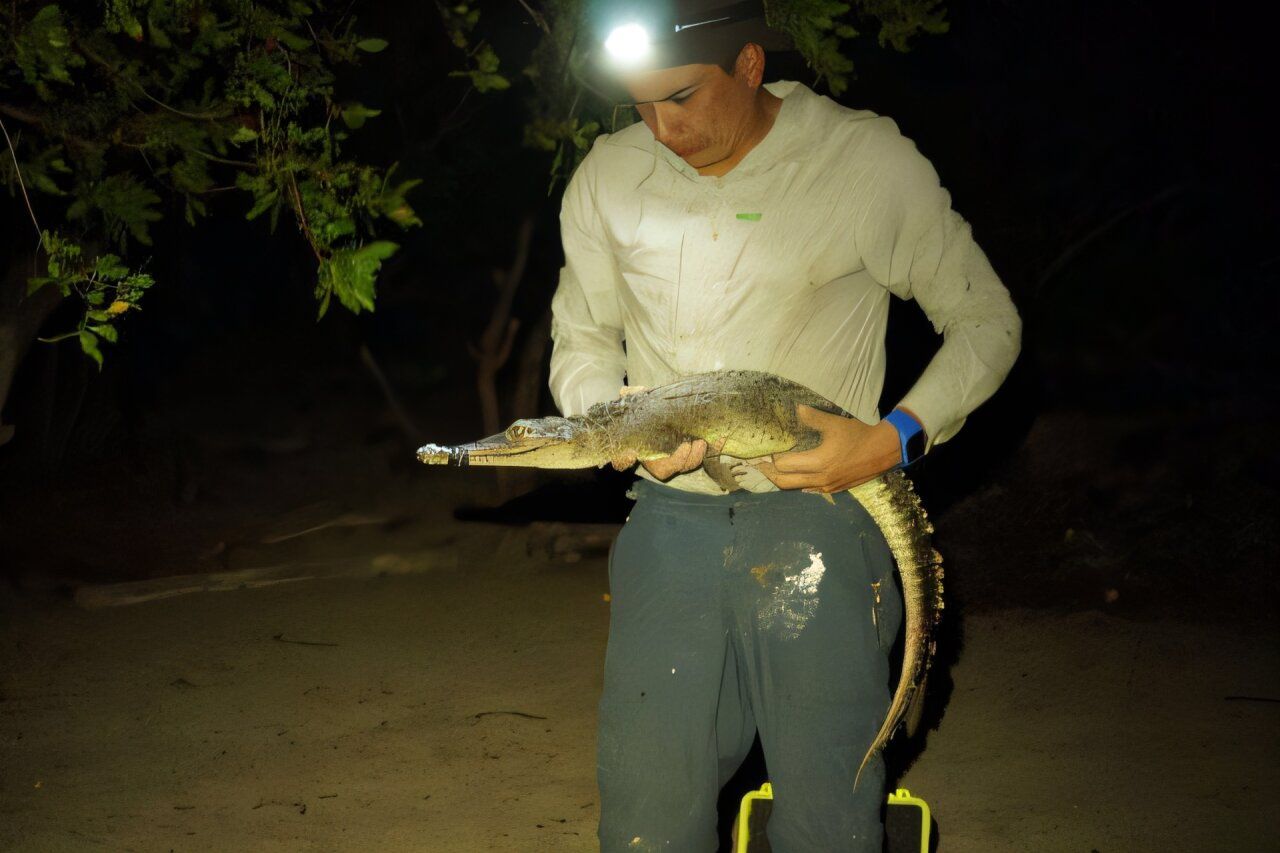Near the dinosaur-killing crater, two living species of unknown reptiles discovered 🐊
Follow us on Google News (click on ☆)
These crocodiles, living on Cozumel Island and Banco Chinchorro Atoll, exhibit significant genetic differences from other Caribbean populations. The study, published in Molecular Phylogenetics and Evolution, challenges traditional classifications of the American crocodile.

One of the newly discovered crocodiles near Yucatán.
Credit: McGill University
The team analyzed the DNA of these reptiles, revealing unique variations. These results suggest an isolated evolution, separate from other crocodile groups. Scientists emphasize the importance of these discoveries for understanding biodiversity.
The populations of these new species are estimated at fewer than a thousand individuals each. Their survival is threatened by coastal development and habitat destruction. Researchers are calling for urgent protective measures.
Hans Larsson, a biology professor, explains that this discovery was unexpected. It opens new perspectives on crocodile diversity in America. Protecting these species will require coordinated efforts.
José Avila-Cervantes, the study's lead author, stresses the importance of genetics in species identification. This work could lead to a revision of crocodile taxonomy in the region.
The habitats of these crocodiles, though stable for now, are very limited. Researchers warn of the risk of extinction if no action is taken. Conserving these ecosystems is vital.
This study illustrates how much biodiversity remains to be discovered. It also highlights the fragility of species in the face of human activities. Protecting these new crocodiles is a major challenge for science and the environment.
How is a new species discovered?
The discovery of a new species often relies on in-depth genetic analyses. Scientists compare the DNA of studied specimens with that of known species. Significant differences may indicate a new species.
Anatomy also plays a crucial role. Researchers examine unique physical characteristics that could distinguish a new species. These observations are then corroborated by genetic data.
The confirmation process can take years. It requires additional studies and publications in recognized scientific journals. Only peer validation can officially confirm the discovery.
This method led to the identification of the two new crocodile species in Mexico. It demonstrates the importance of science in understanding biodiversity.
Why are island species unique?
Islands provide isolated ecosystems where species evolve distinctly. This isolation fosters the development of unique characteristics adapted to specific environments.
Island species are often endemic, meaning they exist nowhere else. This makes them particularly vulnerable to environmental changes and human activities.
The discovery of unique crocodiles on Cozumel and Banco Chinchorro illustrates this phenomenon. Their isolated evolution has led to significant genetic and morphological differences.
Protecting these species requires strategies tailored to their restricted habitat. Their survival depends on preserving their fragile island environment.